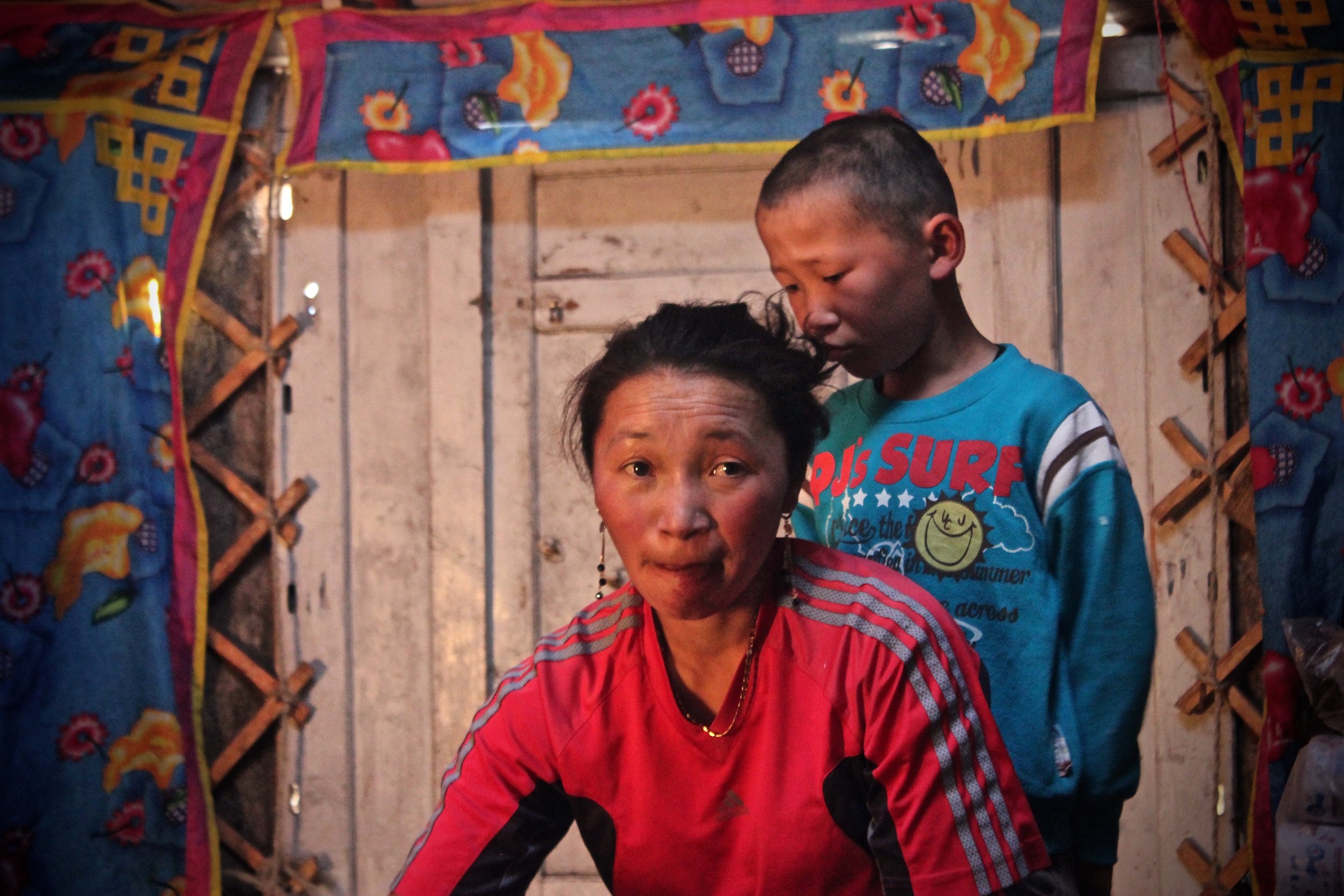Nine-Story Mountain (2014) (Completed):
In the far West of Tibet there is a mountain some call the center of the world.
Logline:
Nine-Story Mountain charts the path of three western researchers, from Lhasa to Mount Kailash, Tibet, on a journey to explore pilgrimage practices across the Tibetan plateau. Together, they set out to unearth the secrets of a mountain and landscape that have magnetized millions of people for centuries.
Director and Director of Photography: Augusta X. Thomson
Producer and Editor: Chelsi S. Bullard
Mobile (In Post-production):
What does it mean to be a female Mongolian herder living in the heart of the Gobi Desert? As rapid urban development, climate change, and mining initiatives threaten traditional herding practices, will technology contribute to the loss of pastoralism across the Mongolian steppe, or make it more viable?
Logline:
Mobile takes viewers inside the worlds of women fighting to survive financially and culturally, as their country becomes a locus for foreign investors, eager to capitalize on Mongolia’s rich mineral resources.
Synopsis:
In Mongolian pastoralist society, women are the heads of households. They handle most of the daily work: tending to and milking the livestock, producing dairy products, cooking daily meals, completing household chores, caring for children, and selling cashmere to local agents. They are strong and proud women who have learned how to shoulder life's burdens with grace. Through intimate conversations with women who call the Gobi Desert home, Mobile invites viewers to stop and listen - to consider how oases of wisdom exist in the middle of the landscapes where intuition is vital for survival. In a world where knowledge is often valued above wisdom, this character-driven documentary considers the implications of increased access to information on traditional Mongolian values, and the potential of womens' wisdom to enrich and ground a culture in transition.
Director and Director of Photography: Augusta X. Thomson
Producer: Augusta X. Thomson
Site of Burdens (2019) (In Production):
What does it mean to leave a burden in the landscape- both materially and metaphorically? What does it mean if millions of people leave a material object with emotional significance in the same place? Does it change the site? And if so, what is our responsibility to the places we mark?
Logline:
Site of Burdens explores the material and metaphysical imprint of objects left by pilgrims to symbolically “let go” of emotional burdens, at the Cruz de Ferro, a ritualistic site along the Camino de Santiago, in the north of Spain.
Synopsis:
On the Camino de Santiago, a Medieval pilgrimage route cutting the north of Spain, there is a famed landmark known as the the Cruz de Ferro. This name refers to a cross, erected in the 11th century by Gaucelmo, a Catholic abbot who lived nearby, and raised to mark a pile of stones. Once a mound heaped by the Celts to designate a strategic road, legends say that pilgrims were asked to carry stones from their homes to help construct the Cathedral of Santiago, and that, since that time, pilgrims have been depositing stones at the base of the cross to symbolically represent the emotional burdens they wish to exorcise.
This practice continues today.
Millions of pilgrims have left stones and mementoes (rings, jewelry, photographs, notes, etc.) at the base of the cross— burdens they have left on their way along the route. Angles on a Cross lingers at the Cruz de Ferro, exploring how it has been “marked,” by the stories and memories of seven specific pilgrims; and the millions of others who have left something of themselves on the top of Monte Irago.
Director: Augusta X. Thomson
Producer: Augusta X. Thomson & The Kalliopeia Foundation.
Where the Horses Went to Die (15 min.)
How does a place speak? Does it speak through the immediacy of experience, a sedimentation of disparate histories? Does it speak through flora and fauna, human navigators, a combination of both?
Synopsis:
Once the site of the largest concentration of horse rendering glue and fertilizer factories in the world, Brooklyn’s Dead Horse Bay gets its name from the horse carcasses that clogged its shoreline during the 19th to early 20th centuries. Using a combination of archival and observational footage, Where the Horses Went to Die tells the story of Dead Horse Bay, one of New York’s largest refuse sites, from the early 17th century to the present, through the perspective of a narrator speaking to the bay brought to life. This poetic foray into Dead Horse Bay’s history, contemporary usage, and uncertain future, troubles conventional narratives of place, revealing how stories about the bay, as both an archaeological record of New York’s historic communities and a dumping site, have been used to construct a place that is both serving tourists and a contested environmental site.
Director: Augusta X. Thomson
Producer: Augusta X. Thomson & The Culture and Media Program (NYU).



